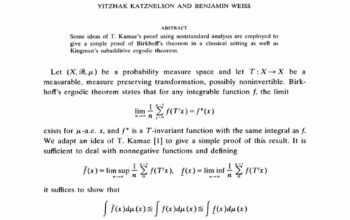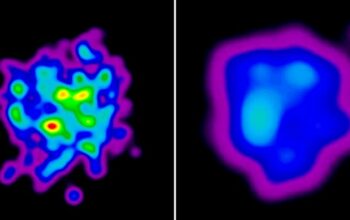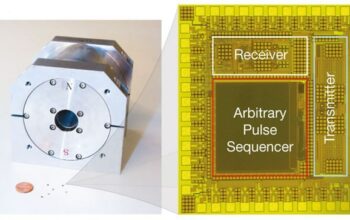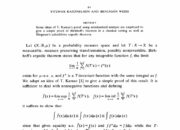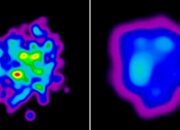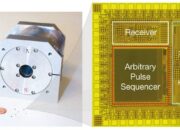In the burgeoning realm of quantum computing, a beacon of innovation is emerging: the application of gamma-ray shaping. This nascent technology, initially grounded in the disciplines of nuclear physics and materials science, holds the potential to redefine computational paradigms through the manipulation of quantum states at unprecedented levels of precision. Such advancements do not merely advocate for enhanced processing velocity; they herald the dawn of fundamentally new architectures capable of transcending classical limitations.
To elucidate the symbiotic relationship between gamma radiation and quantum computation, one must first delve into the intrinsic properties of gamma rays. Characterized by their high-energy photons, gamma rays exhibit unique interactions with matter, allowing them to penetrate dense materials without significant attenuation. This penetrating power is reminiscent of a finely tuned blade slicing effortlessly through the fabric of reality, offering insights into the behavior of subatomic particles and the states of matter.
The crux of the gamma-ray initiative lies within the concept of shaping. By encoding information within the temporal and spatial distributions of gamma photons, researchers are exploring novel methods to control quantum states with remarkable fidelity. This process resembles crafting a symphony, where each note—each photon—must align perfectly to create a harmonious outcome. Such orchestration could facilitate qubit manipulation, the foundational element of quantum computation, leading to advancements that may render current electronic architectures obsolete.
In the context of quantum computing, qubits exhibit extraordinary versatility, possessing the ability to exist in multiple states simultaneously, a phenomenon referred to as superposition. The utility of gamma-ray shaping becomes evident as it presents a method for ensuring that qubits remain in a coherent state, mitigating the environmental noise that typically plagues quantum systems. By employing carefully modulated gamma rays, researchers could potentially prolong coherence times, thus enhancing the fidelity of quantum operations. This innovative approach paves a pathway toward error-resistant quantum computations that align closer to practical real-world applications.
Furthermore, the intersection of gamma rays and quantum entanglement represents another frontier ripe for exploration. Entanglement, the peculiar correlation between particles that maintains coherence irrespective of distance, is pivotal for quantum information transmission and cryptography. Shaping gamma rays can be utilized to create entangled photon pairs, facilitating rapid data transfer with reduced decoherence rates. This phenomenon can be visualized as a tightly woven tapestry, where the threads of entangled photons interlace, conveying information through subtle variations in gamma emissions. Consequently, this technology not only enhances computational speeds but also fortifies the security of quantum communications.
However, the application of gamma-ray shaping is not without its challenges. The generation and manipulation of gamma-induced states necessitate sophisticated innovations in shielding and detection technologies. The energetic nature of gamma rays poses a risk; thus, ensuring safe operational protocols is paramount. Advances in material sciences, such as the development of novel superconductors and metamaterials capable of withstanding gamma radiation, will be instrumental in overcoming these obstacles. The potential for creative engineering solutions invites a fresh wave of interdisciplinary collaboration among physicists, engineers, and computer scientists.
As we contemplate the trajectory of gamma-ray shaping in quantum computers, it is essential to consider its broader implications on the landscape of technology. This echoes the age-old quest for knowledge, wherein humanity harnesses the enigmatic forces of nature to illuminate the unknown. Gamma-ray shaping could serve as a catalyst for an entirely new era of computational sophistication, one that integrates insights from quantum mechanics into the foundational computations of tomorrow. The prospect of a nuclear quantum computer—one where gamma-ray technology becomes a cornerstone—represents the ultimate fusion of theory and practice.
As we stand on the precipice of this scientific revolution, it is prudent to reflect on the ethical dimensions accompanying such profound advancements. The manipulation of gamma radiation, while promising in its capabilities, raises questions regarding safety, environmental impact, and security. The imperative to establish comprehensive regulatory frameworks that govern the use of this technology cannot be understated. The scientific community must engage proactively in dialogues that emphasize responsible application, ensuring that innovation does not outpace our ethical considerations.
In conclusion, gamma-ray shaping is poised to emerge as an influential cornerstone in the development of nuclear quantum computers. By harnessing the extraordinary properties of gamma rays, researchers may unlock frontier technologies that redefine our understanding of computation and information processing. This transformative journey not only challenges existing paradigms but also invites a deeper inquiry into the seamless interplay between quantum mechanics and technological innovation. The realization of such a vision will necessitate collective effort across multiple disciplines, ensuring that the potential these advancements hold is realized in a manner that is equitable and sustainable. As we venture forth into this intricate tapestry of knowledge, the future of quantum computing appears luminescent, fueled by the enigmatic brilliance of gamma-ray shaping.



